The 7 Stages of Male Pattern Baldness
Discover the 7 stages of hair loss, from initial thinning to complete baldness. Learn about treatment options and coping strategies for each stage.

Male pattern baldness is a common condition that affects millions of men worldwide.
It is a gradual process that can have a significant impact on one’s appearance and self-esteem.
Understanding the progression of male pattern baldness can help individuals make informed decisions about treatment options.
In recent years, Platelet-Rich Plasma (PRP) hair growth treatment has gained popularity for its potential to address hair loss at various stages. In this article, we will delve into the 7 stages of male pattern baldness and explore how PRP therapy can help at each stage.
Stage 1: Minimal Hair Loss
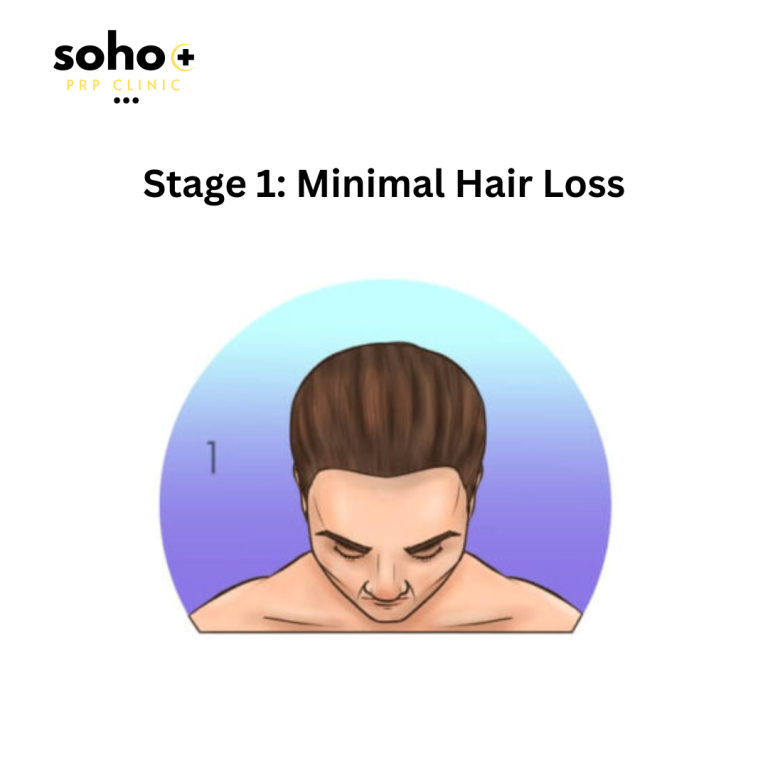
In the initial stage, men may notice minor hair thinning or a receding hairline.
While the changes may be subtle, they often signify the onset of male pattern baldness.
This can be maintained by applying a mixture of natural oils such as rosemary, castor and coconut oil regularly.
PRP hair growth treatment can be beneficial during this stage as it stimulates the hair follicles, slows down hair loss progression, and promotes healthier, thicker hair growth.
By taking action early on, individuals may increase their chances of achieving better results.
Stage 2: Widening Part
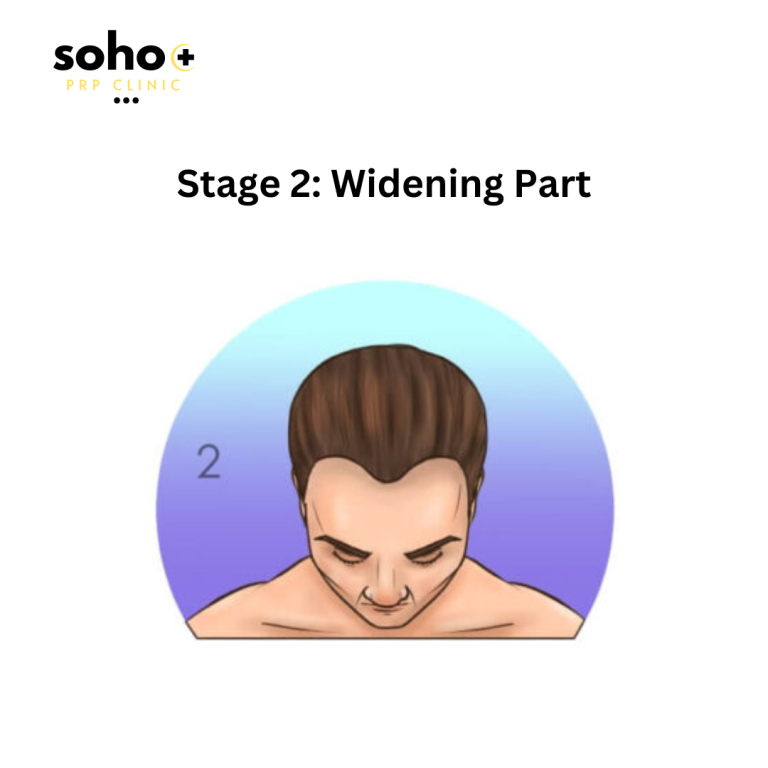
As male pattern baldness progresses, the parting of the hair becomes more noticeable, leading to a widening part.
This stage can be distressing for individuals as it becomes harder to conceal hair thinning.
PRP treatment can target the affected areas, stimulating hair growth and helping to restore thickness.
Combining PRP treatment with other hair loss prevention methods, such as maintaining a balanced diet and following a suitable hair care routine, can further enhance outcomes.
Stage 3 Vertex: Receding Hairline & Crown Hair Loss
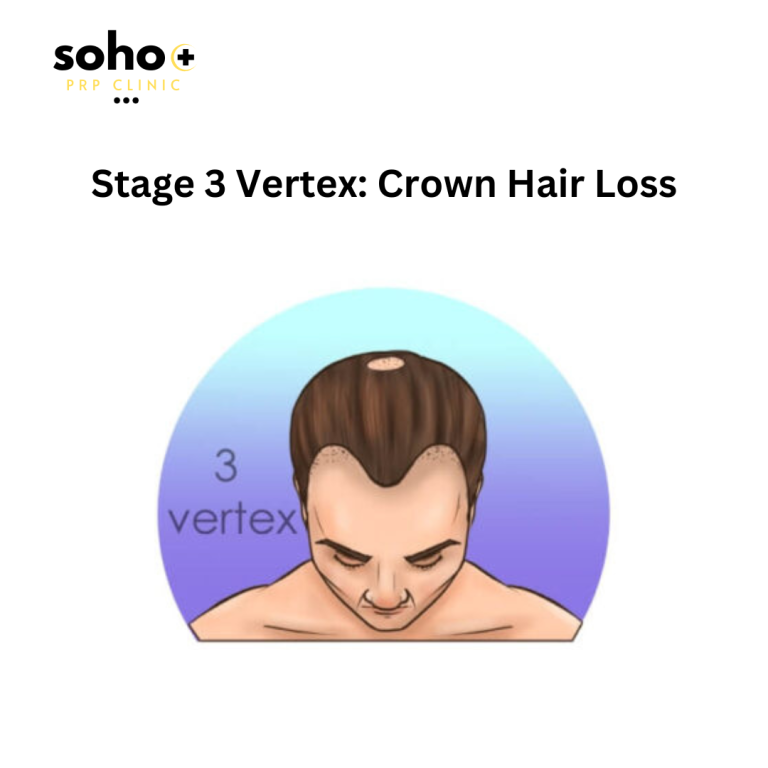
Stage 3 is often characterized by a receding hairline, forming an “M” shape, which is a classic sign of male pattern baldness.
PRP therapy can play a vital role in halting hairline recession and promoting regrowth.
By injecting platelet-rich plasma into the scalp, PRP treatment stimulates dormant hair follicles, encouraging them to produce new strands of hair.
Consistency in PRP treatment sessions is crucial to achieve optimal and lasting results.
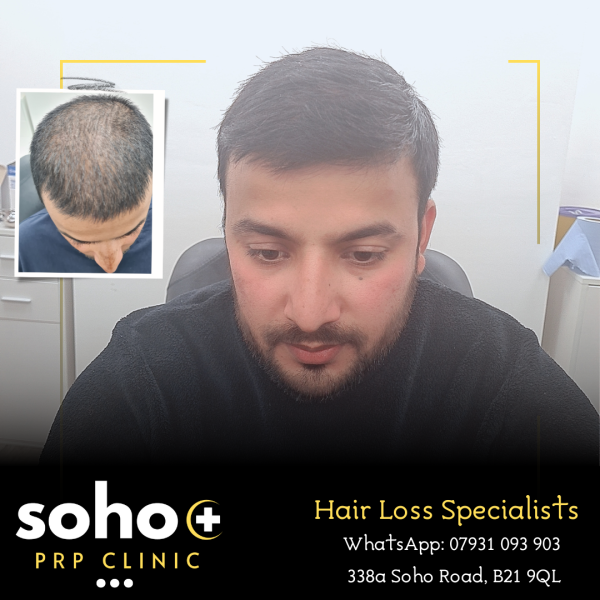
Are you experiencing hair loss?
Send a picture of your scalp and our consultant will examine it and recommend the best treatment for you – free of charge!
Send a picture of front and back like this…
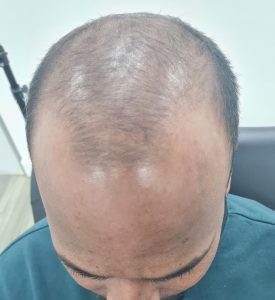
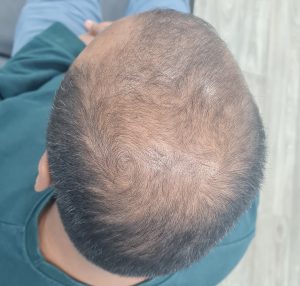

Soho PRP Clinic:
07931 093 903
Stage 4: Crown Hair Loss
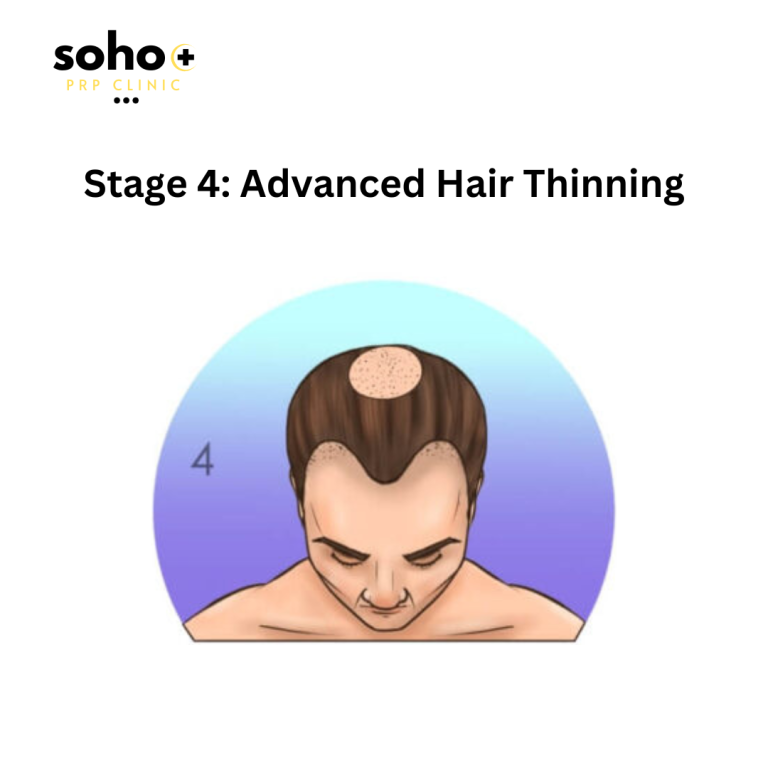
In stage 4, men may experience a bald spot or thinning at the crown of their head.
PRP hair growth treatment targets this specific area, helping to improve density and promote regrowth.
By harnessing the regenerative properties of platelet-rich plasma, individuals can restore the appearance of fullness in the crown region. It is important to note, however, that PRP treatment may have limitations for individuals at more advanced stages of hair loss.
Stage 5: Advanced Hair Thinning
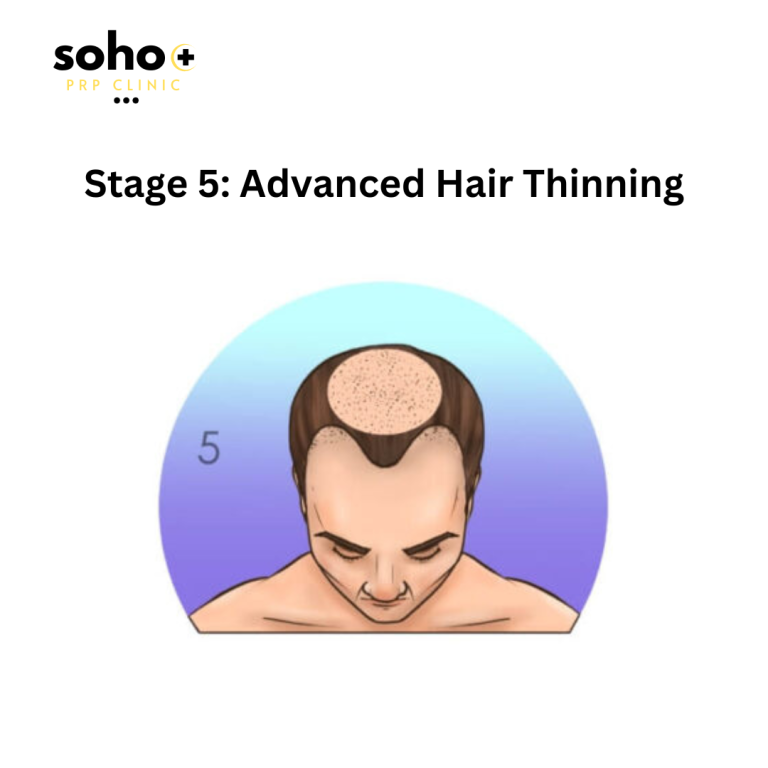
Stage 5 is characterized by significant hair thinning throughout the scalp.
At this stage, PRP therapy can be effective in slowing down hair loss and promoting regrowth. By revitalizing weakened hair follicles, the treatment helps to rejuvenate the affected areas, leading to improved hair density and thickness.
Individuals should remember that realistic expectations, combined with ongoing PRP treatment, are key to achieving the desired results.
Stage 6: Widespread Baldness
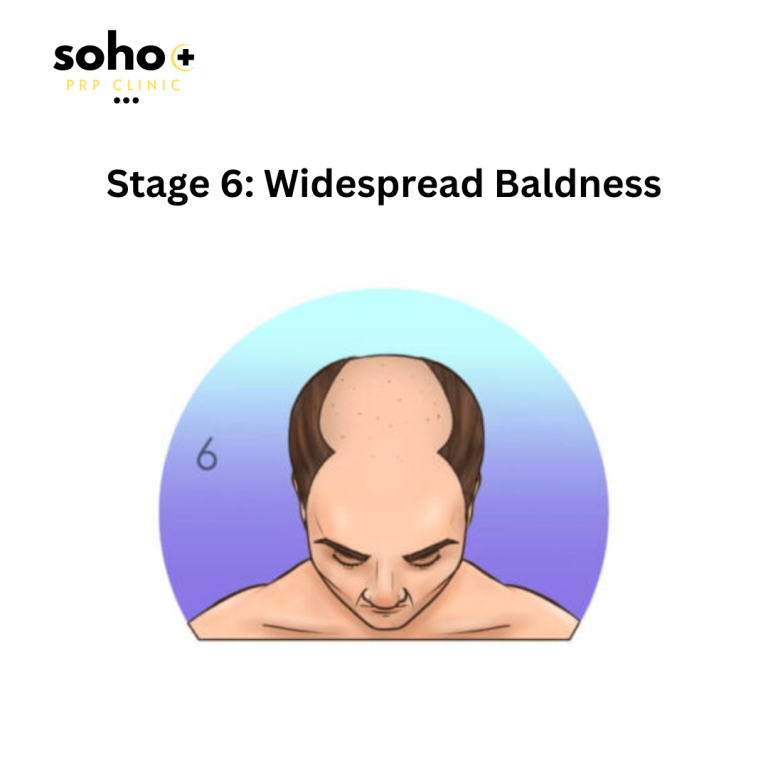
In this stage, extensive hair loss is evident, with only a band of hair remaining around the sides and back of the head.
At this advanced stage, PRP treatment may be less effective due to severe follicle damage. Individuals experiencing widespread baldness may wish to explore other options, such as hair transplant surgery.
Consulting with a hair restoration specialist will help determine the most suitable treatment approach.
Stage 7: Complete Baldness
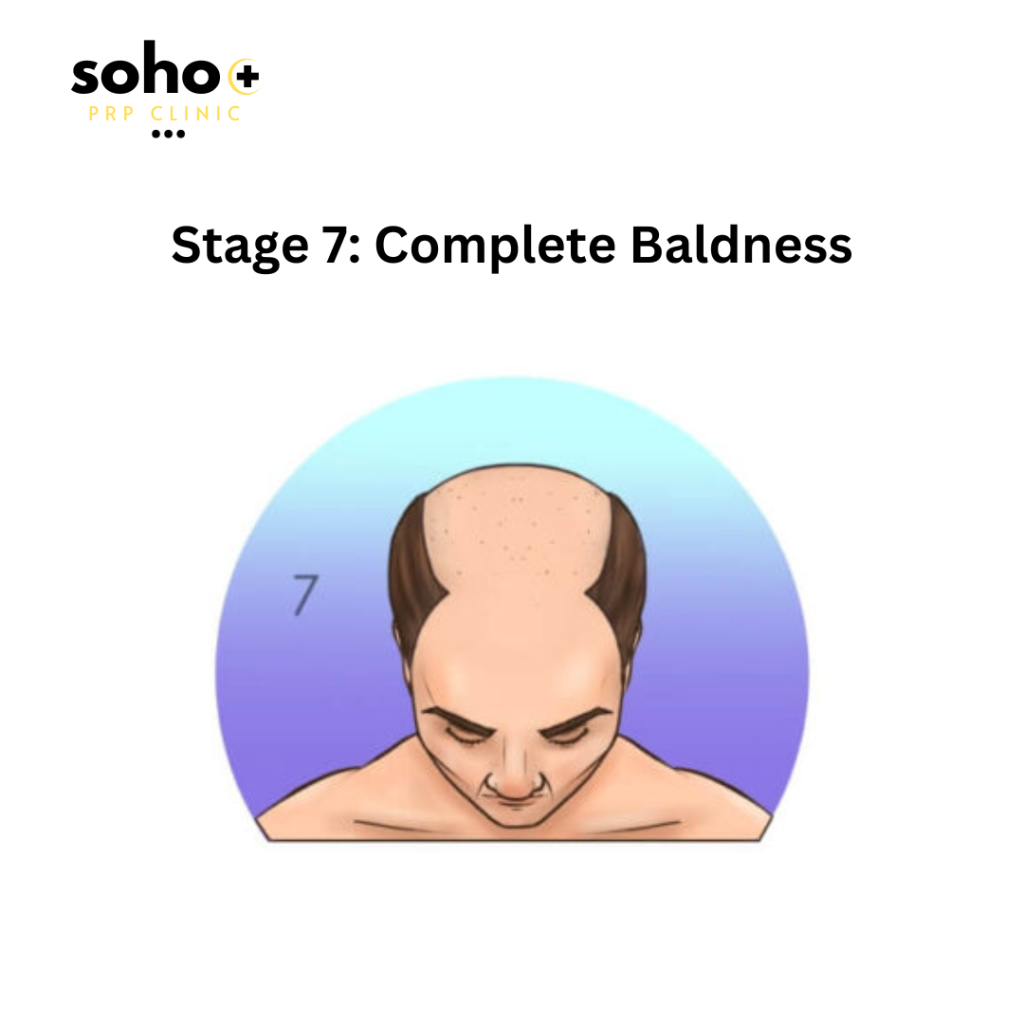
The final stage of male pattern baldness is characterized by complete baldness, with no visible hair on the scalp.
At this point, PRP treatment may not be applicable, as there may be limited capacity for hair regrowth. For individuals in this stage, seeking professional advice from a hair restoration specialist is crucial.
They can recommend alternative treatments, such as hair transplant surgery, that may provide the desired results.
Conclusion
Understanding the different stages of male pattern baldness empowers individuals to take appropriate action to address their hair loss concerns.
PRP hair growth treatment has shown promising results in slowing down hair loss progression, stimulating regrowth, and improving hair density.
However, it is important to seek professional guidance and have realistic expectations about the treatment’s efficacy at each stage.
By combining PRP therapy with a holistic approach to hair care and overall well-being, individuals can make strides towards regaining their confidence and achieving the appearance they desire.
Are you experiencing hair loss?
Send a picture of your scalp and our consultant will examine it and recommend the best treatment for you – free of charge!
Send a picture of front and back like this…



Soho PRP Clinic:
07931 093 903

